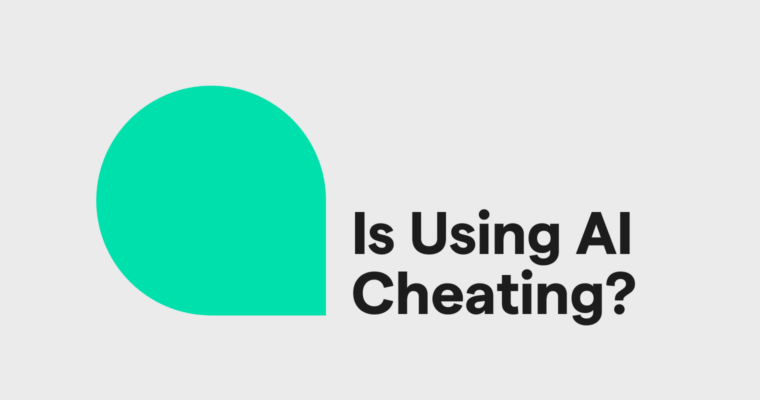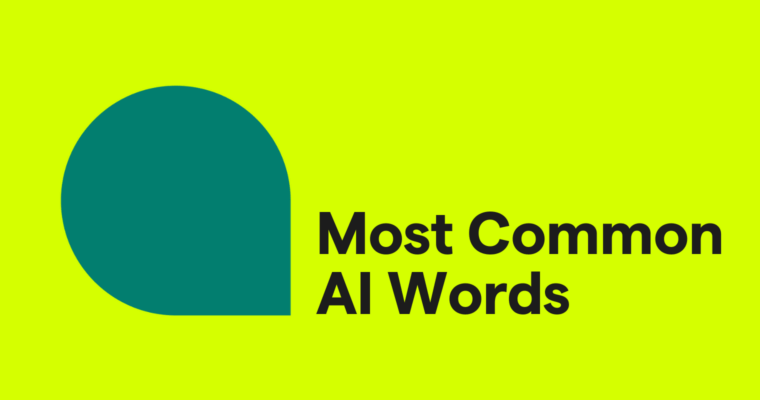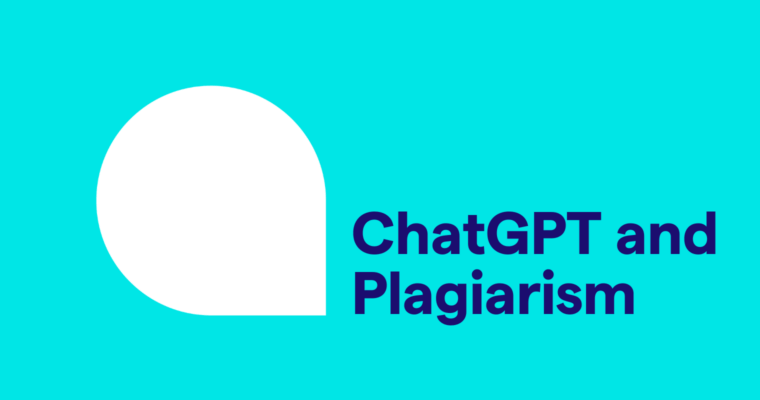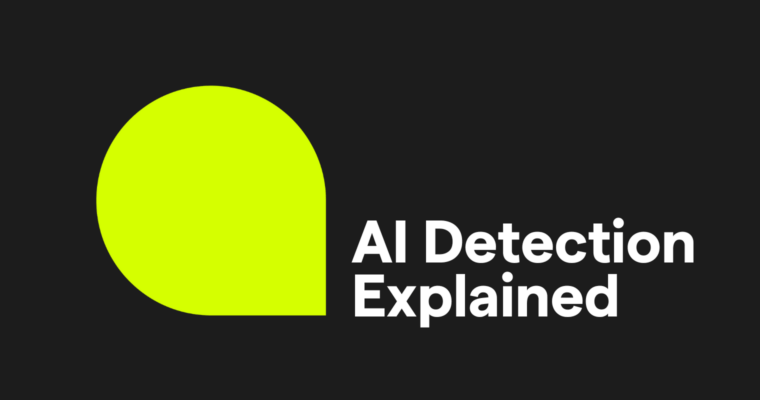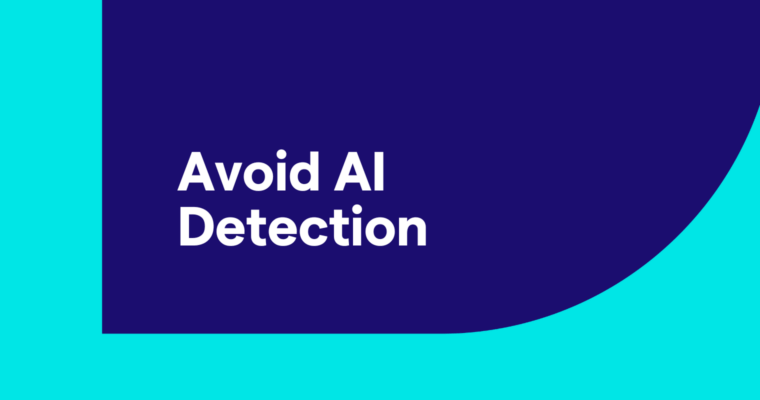
Key takeaways
- AI detectors look for patterns like repetition, predictability, and lack of personal voice.
- Avoiding detection isn’t about tricking tools—it’s about writing authentically and using AI responsibly.
- Combine AI detection with proper citation practices and additional tools like Grammarly Authorship and plagiarism detection.
If artificial intelligence (AI) tools like ChatGPT and Grammarly have become your everyday writing companions, you might wonder if your readers can tell. And if you’re working in an academic setting, you might even contend with AI detectors scanning your documents.
Understanding how AI-detection tools work is important so that you can learn what to look out for in your writing. But avoiding AI detection in writing isn’t about outsmarting detection tools.
This article will walk you through what AI detectors typically look for—and more importantly, how to use AI tools thoughtfully so your writing reflects your voice, your ideas, and your intent. But before we get into how to avoid AI detection and use these tools responsibly, let’s take a closer look at what AI detection actually is.
Table of contents
- What is AI detection?
- How AI detectors work
- Six ways to avoid AI detection (responsibly)
- Why responsible AI use matters
- Grammarly’s features for original, authentic content
- Conclusion
- How to avoid AI detection FAQs
What is AI detection?
AI detectors analyze writing for certain patterns and characteristics in order to estimate the likelihood of AI involvement.
These tools are often used in settings like education, publishing, and content moderation to flag work that may not be original or may require a closer review. They spot traits often found in AI-generated content, such as repetition, uniform sentence structure, or overly polished phrasing.
However, AI detection isn’t always accurate. These tools provide probability-based assessments—not definitive results. In other words, just because something gets flagged doesn’t necessarily mean it was written by AI. Likewise, AI-generated text might not get flagged at all.
How AI detectors work
AI detectors rely on machine learning algorithms trained to recognize patterns that are more common in AI-generated content than in human-written text. These tools don’t “know” if AI was used—they simply look for markers that suggest it might have been.
Here are a few key features they often analyze:
- Predictability (low perplexity): AI tends to write in a smooth, logical flow that can sometimes feel overly polished or obvious.
- Uniform sentence length (low burstiness): AI often creates consistent sentence structures, whereas human writing naturally includes variation—some short, some long.
- Repetition and phrasing: AI might reuse certain phrases or sentence patterns.
- Lack of personal voice or detail: AI responses may sound generic or vague compared to the nuance of human experiences.
If a piece of writing includes several of these traits, it may raise a flag. But that doesn’t necessarily mean it was written by AI—just that it shares some of the characteristics commonly found in AI-generated text.
Can AI detection tools be trusted? Limitations to know
AI detection tools can offer helpful insight, but they aren’t foolproof. Most use statistical models to identify writing that “looks” like AI output—based on patterns like uniform structure, high predictability, or lack of personal detail.
However, these tools can sometimes flag human-written text as AI-generated (false positives) or miss AI-generated content entirely (false negatives). Because AI writing is evolving rapidly—and because human writing varies widely—no detection tool can guarantee perfect accuracy. That’s why detection results should be treated as probability-based signals, not definitive proof. Learn more about AI detection accuracy in our article that dives into how these tools work—and where they fall short.
How to avoid AI detection in writing (responsibly): 6 effective strategies
AI can be a helpful part of the writing process, from creating outlines to suggesting clearer phrasing. But the goal isn’t to “cheat” AI detectors or hide your use of these tools—it’s to make sure your final piece feels authentic, personal, and unmistakably yours.
Here are a few ways to work with AI while keeping your writing grounded in your own voice:
1 Use AI to support—not replace—your writing
Think of AI as a writing assistant, not the main author. It can help you brainstorm, organize your thoughts, or offer a clearer way to say something. But your perspective and final message should come from you.
2 Avoid overreliance on AI-generated content
It can be tempting to copy and paste an AI-generated paragraph, but doing so often leads to writing that feels generic or impersonal. Instead, use AI outputs as a rough draft or guide—and then make it your own through rewriting and refinement.
3 Include your personal insight or experience
One of the easiest ways to humanize your writing is to bring in details only you can offer. Whether it’s a personal anecdote, an original opinion, or a specific example, this kind of context adds authenticity that AI simply can’t replicate.
4 Vary your sentence structure and tone
One giveaway of AI-generated content is overly uniform sentences. Mix things up by alternating between short and long sentences and using a tone that reflects the content, context, and your natural voice.
5 Choose words that reflect your voice
AI-generated writing often uses familiar phrasing that can make your content sound generic or robotic. Choose vivid, precise, and emotionally resonant words in order to make your writing unmistakably human. Learn what words and phrases are indicators of AI-generated content here.
6 Use human editors
Everyone needs an editor—especially when you’ve been looking at something for a long time. A friend or colleague can help spot repetitive phrasing, awkward sentences, and factual inaccuracies.
Why responsible AI use matters
AI can be a great assistant that offers suggestions, helps you brainstorm, or refines your message. But at the end of the day, your ideas, your perspective, and your voice are what make writing resonate with readers. When AI is used without an understanding of how to use it responsibly, it can lead to unintended consequences, like:
- Plagiarism
- Overly generic or formulaic content
- Violations of academic integrity policies
- A loss of originality, personality, or credibility
In academic and professional settings especially, it’s important to be transparent about the role AI plays in your writing process. Some institutions may expect AI-generated content to be cited or disclosed, just like any other source. When expectations are unclear, it’s best to ask questions, check relevant policies, or include a citation showing that AI was used.
Tools like Grammarly Authorship help support transparency by showing how a document was created. Authorship provides a breakdown of whether the text was typed by you, pasted from elsewhere, or generated with AI. That visibility can help you understand your own process and demonstrate originality—whether you’re working on an academic paper, a professional report, or anything in between.
Grammarly’s features for original, authentic content
Grammarly’s features are designed to support transparency and responsible AI use so you can focus on creating content that reflects your own thinking and voice.
Here’s how Grammarly supports you:
- AI detection lets you check how your writing sounds and see where you might want to add more of your personal voice.
- Plagiarism detection compares your work against online sources to make sure your writing is original and properly attributed.
- Citations help you easily and clearly acknowledge your sources—whether you’re referencing AI tools, websites, or other materials—making it easier to maintain transparency and meet academic or professional standards.
- Grammarly Authorship tracks how your text was created, giving you a clear record of how your work came together. This can be useful for proving originality and navigating questions about how your writing was developed.
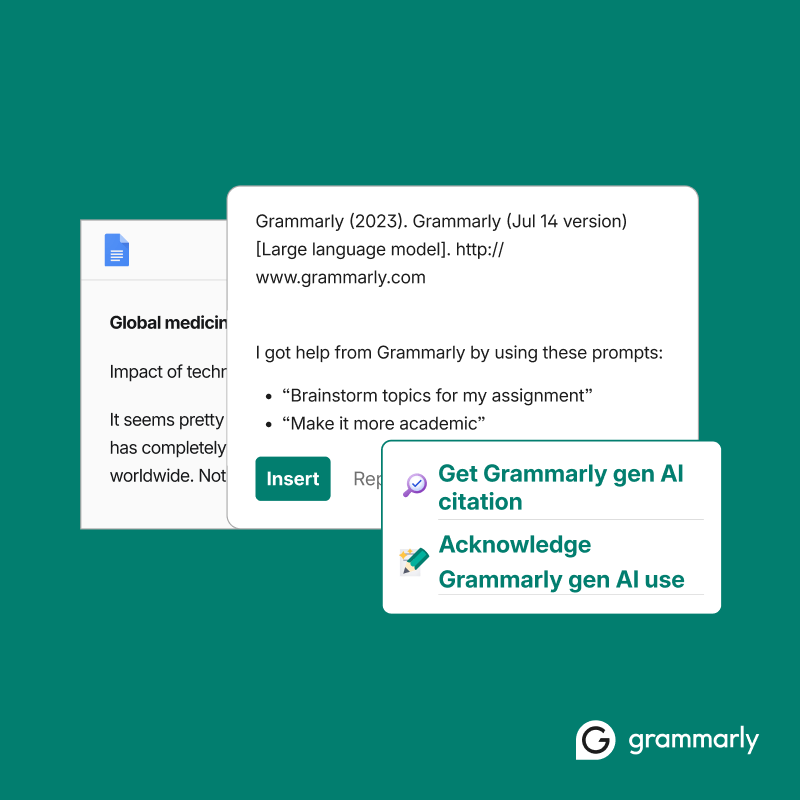
By combining these tools, you can ensure transparency, proper attribution, and originality in your work, even if you use AI as a tool in your process.
Conclusion
Avoiding AI detection isn’t about “outsmarting the system.” It’s about writing authentically and using AI as a helpful tool, not a replacement for your own critical thinking. With the right approach, you can use AI to overcome writer’s block, rephrase tricky sentences, or get inspired—while still owning your voice and your ideas, and avoiding misunderstandings that could lead to academic or professional consequences.
At Grammarly, we believe responsible AI use is about enhancing human creativity—not replacing it. When you lead with intention, originality, and clarity, your writing is more likely to reflect who you are and what you truly mean to say. And with tools that support transparency, you can feel more confident navigating the evolving technology.
Whether you’re using AI to brainstorm or polish your final draft, Grammarly is here to help you write with confidence—and stay true to your voice every step of the way.
How to avoid AI detection in writing FAQs
Can AI writing be detected?
Yes, but not with 100% accuracy. AI detectors look for patterns like repetition, sentence uniformity, and predictability. Human editing, rewriting, and personal touches make detection less likely—and improve your writing overall.
How can I make AI text undetectable?
If you’re using AI in your writing process, the goal shouldn’t be to hide it, but to make sure the final result reflects your own thinking and voice. You can do this by adding personal examples, mixing up sentence length, rephrasing AI output in your own words, and adjusting the tone to match your natural style.
How can I make AI-assisted writing sound more human?
Add personal examples, vary sentence length, revise AI output in your own words, and pay attention to tone and word choice. Grammarly can help refine your writing to sound natural and confident.
How accurate are AI content detectors?
No AI detector is 100% accurate. You should never rely on the results of an AI detector alone to determine whether AI was used to generate content. AI detectors can identify patterns found in human writing and AI-generated text, but they cannot definitively conclude whether or not AI was used. These tools should be one part of a holistic approach to evaluating writing originality.

